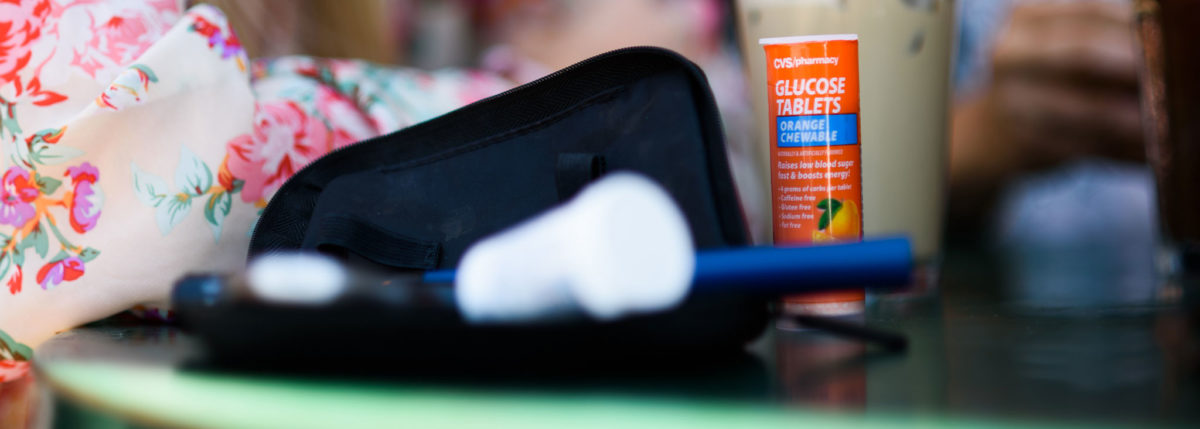Hypoglycemia and How to Treat It
Editor’s Note: This article was written by Dr. Osama Hamdy from the Joslin Diabetes Center, which is the world’s largest diabetes research center, diabetes clinic, and provider of diabetes education. It was founded in 1952 and is located in Boston, Massachusetts, USA.
What is hypoglycemia?
Hypoglycemia is the state of low blood sugar and is caused by too much insulin or too little sugar in the body. It is defined as a blood sugar below 3.9 millimoles per liter (mmol/L)70 milligrams per deciliter (mg/dL). Untreated, it may result in seizures, unconsciousness and sometimes death.
What are symptoms of hypoglycemia?
- anxious feeling
- behavior change similar to being drunk
- blurred vision
- cold sweats
- confusion
- cool pale skin
- difficulty in concentrating
- drowsiness
- excessive hunger
- fast heartbeat
- headache
- nausea
- nervousness
- nightmares
- restless sleep
- shakiness
- slurred speech
- unusual tiredness or weakness
What causes hypoglycemia?
You can go low if you miss a meal, don’t eat enough food for the amount of insulin you’ve taken or exercise a lot. It’s imperative to monitor and treat low blood sugars immediately in order to prevent severe hypoglycemia and unconsciousness.
How do you treat it?
It’s important to know that treatment of hypoglycemia depends on the severity of the low blood sugar reading, and whether or not the person having a “hypo” is alert.
If person is awake…
treat with simple carbohydrates (15 grams*)
- Glucose tabs (4 tablets)
- Glucose gel (1 tube) (ideal for people with gastroparesis because delayed absorption)
- Regular soda (4 ounces or half cup)
- Juice (4 ounces or half cup)
- Granulated sugar (4 teaspoons)
Blood glucose should be checked 15 minutes after treatment, and if blood glucose remains <3.9 mmol/L70 mg/dl, another 15 grams of simple carbohydrates should be given. If you are sick at the time of a low, the number to consider a hypoglycemic event should be higher (about 5.5 mmol/L100 mg/dl.). *Number of carbs to treat a low should be adjusted for a personal ratio.
If person is unconscious…
treat with glucagon and call emergency services
While there was only one option for decades—and it was complicated to use—there are many new and improved emergency glucagon treatment products available today, including:
- Nasal glucagon – Baqsimi®: This is an emergency glucagon that’s administered through your nose.
- Glucagon pen – Gvoke HypoPen®: This is a premixed glucagon injection that you press against your thigh. The auto-inject device makes it quick and easy to use. It is also available in a prefilled syringe (PFS).
- Glucagon vial & syringe – Gvoke Kit®: This is a premixed glucagon in a vial that comes with a syringe, allowing you to draw up the dose manually and inject it directly into your thigh.
- Glucagon pen – Zegalogue®: Also a premixed glucagon, available as an easy-to-use auto-inject device. It is also available in a prefilled syringe (PFS).
Learn about copay cards and patient assistance programs to get glucagon.
What is Glucagon?
Glucagon is a hormone medicine used in emergencies when a person with diabetes is experiencing severe hypoglycemia and cannot take sugar orally. It comes in several forms including a nasal spray, autoinjectors, prefilled syringes, or a powder that must be mixed with a liquid before injecting.
Consult with your endo
Recurrence of hypoglycemia is common, and you should make adjustments to your insulin regimen with your doctor after a hypoglycemic event to avoid more lows. Endocrinologists will review your insulin regimen and adjust basal or corrective bedtime insulin doses if you’re getting lows while sleeping, or bolus and/or correct insulin doses if you have hypoglycemia after meals (postprandial hypoglycemia).
Blood glucose (BG) spikes after a low
In about 20 percent of cases, rebound hyperglycemia (or blood sugar spikes) occur after a a low. Over-correction with carbohydrates is the main cause of rebound hyperglycemia. It is recommended to give no more than 20 grams of carbohydrate for correction of blood glucose between 3-4 mmol/L50-70 mg/dl and as noted previously, to check BG levels as needed in 15 minute increments, giving 15 grams more of carbs until blood glucose levels rise.
Read How to Prevent Eye Complications with Type 1 Diabetes by the Joslin Center and read All About Glucagon.





